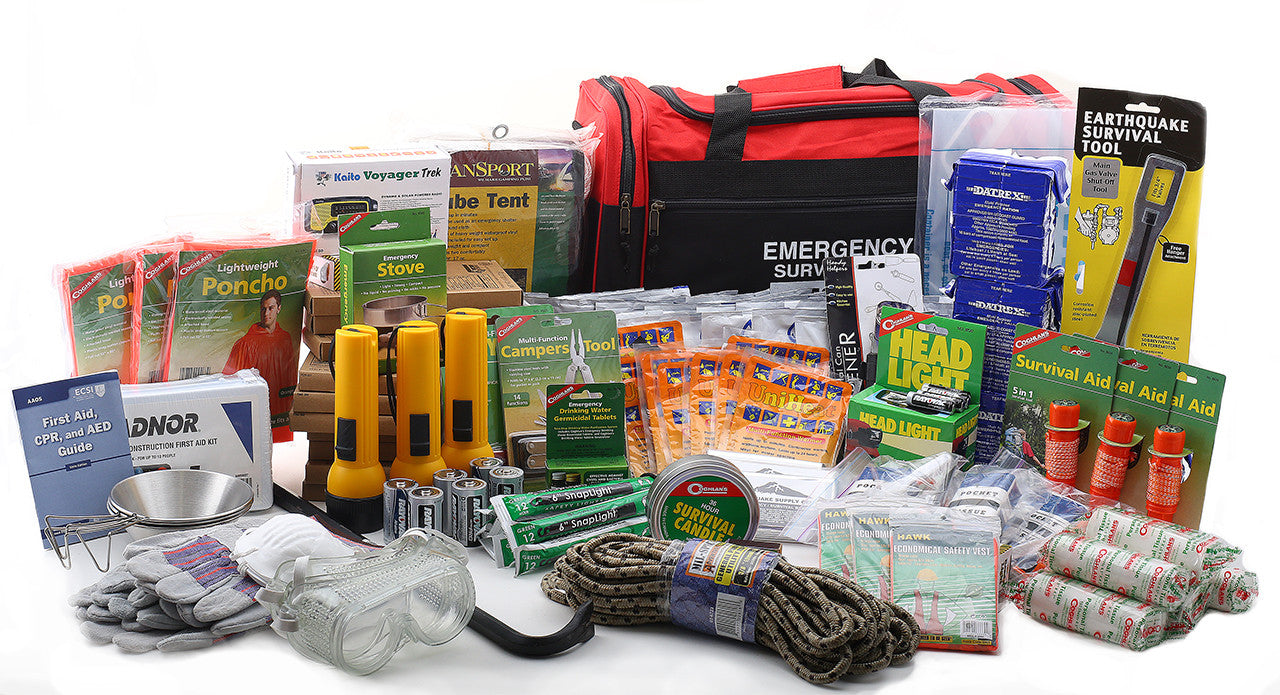Be Ready for Anything: Emergency Preparedness Tips for Every Circumstance
Be Ready for Anything: Emergency Preparedness Tips for Every Circumstance
Blog Article
Just How to Develop a Comprehensive Emergency Readiness Strategy
In the world of readiness, developing a comprehensive emergency plan is not simply a job to examine off a listing; it is a vital cornerstone of any type of organization or individual's durability technique. By carefully crafting a strategy that attends to different facets of emergency monitoring, consisting of threat evaluation, communication methods, source allocation, and critical decision-making, one can lay a solid structure for protecting operations, lives, and assets.
Relevance of Emergency Situation Preparedness
Emergency readiness is vital for minimizing possible threats and ensuring the safety and security of individuals and areas. In today's globe, where natural calamities, public health dilemmas, and various other emergency situations can strike without warning, being prepared can make a substantial difference in reducing the influence of these occasions. By having a well-thought-out emergency situation readiness strategy in place, people and organizations can respond successfully, secure lives, and lower residential property damages.
Among the key reasons that emergency preparedness is important is its function in conserving lives. When emergency situations take place, having a strategy that outlines clear procedures for emergency situation, emptying, and interaction action can assist people act quickly and decisively. This can stop injuries and fatalities by making sure that people know what actions to require to stay risk-free
Furthermore, emergency readiness boosts the resilience of communities. By promoting a society of preparedness and planning for various situations, areas can recuperate much more swiftly from disasters and disruptions. This strength is essential for preserving security, connection of procedures, and total health in the face of hardship.
Assessing Prospective Dangers
Taking into consideration the importance of being prepared for unexpected occasions, the preliminary action in establishing an effective emergency readiness plan involves completely examining and examining possible dangers. This evaluation needs a detailed evaluation of all possible hazards that could affect the organization, taking into consideration factors such as location, sector, and historic information on events. By determining these dangers, organizations can prioritize their readiness efforts and designate sources effectively to alleviate the most considerable hazards.
Usual threats that organizations might deal with include all-natural calamities like hurricanes, floods, or earthquakes, technological threats such as power blackouts or information violations, as well as human-caused threats like crashes or intentional acts of physical violence. Carrying out a risk analysis likewise entails taking into consideration the prospective influence of these events on the company's operations, employees, clients, and credibility. By performing a detailed danger analysis, organizations can create tailored emergency situation reaction strategies that address their certain vulnerabilities and make sure effective readiness for any prospective situation.
Creating an Interaction Strategy
Developing a comprehensive and clear interaction strategy is important for efficient emergency situation preparedness within organizations. In times of dilemma, interaction plays a vital duty in guaranteeing the safety and well-being of employees, stakeholders, and the neighborhood. A well-balanced interaction strategy must lay out clear lines of communication, designate vital workers responsible for interaction jobs, and establish methods for distributing info promptly and precisely.
One trick aspect of developing an interaction strategy is recognizing alternating and main communication networks (EMERGENCY PREPAREDNESS). These can consist of e-mail, message messaging, phone trees, social media sites platforms, and public address systems. It is important to make sure that these networks are reliable, accessible, and on a regular basis checked to assure their performance throughout emergency situations

Building an Emergency Kit
Offered the vital importance of readiness in times of crisis, a vital element that companies should address is the facility of an emergency set. When assembling an emergency situation kit, it is necessary to think about the details needs and image source conditions of the organization. In addition, organizations ought to consist of important papers, such as call lists, insurance coverage information, and emergency action plans, in water resistant containers within the set.
Developing Evacuation Procedures
To make sure the safety and orderly emptying of employees throughout emergency situations, companies have to develop efficient and clear discharge treatments. Discharge procedures need to encompass a series of prospective circumstances, consisting of fires, natural calamities, or various other emergency situations that require swift emptying.

Furthermore, companies should establish a system for audit for all personnel during a discharge to ensure that everybody has actually securely left the premises. Communication plays an essential function in evacuation treatments, with clear guidelines on how to evacuate and when to do so. Regular testimonial and updating of emptying procedures based on responses and transforming circumstances are important to preserving the effectiveness of the plan.
Conclusion
In final thought, establishing a thorough emergency situation readiness strategy is critical for ensuring the safety and well-being of individuals in the event of a disaster (EMERGENCY PREPAREDNESS). By evaluating potential risks, creating a communication strategy, constructing an emergency situation set, and establishing evacuation people, treatments and companies can be better geared up to react effectively to emergencies. It is important to focus on readiness efforts to mitigate the impact of calamities and secure lives and property
In the world of readiness, developing a comprehensive emergency situation strategy is not merely a job to inspect off a listing; it is a vital cornerstone of any kind of organization or individual's strength approach. When emergency situations occur, having a strategy that outlines clear treatments for emergency, interaction, and discharge feedback can aid individuals act promptly and decisively. website here. By performing a thorough risk analysis, companies can develop customized emergency reaction plans that address their particular vulnerabilities and ensure efficient preparedness for any prospective situation
Establishing a clear and detailed communication strategy is vital for reliable emergency situation readiness within organizations. By examining potential dangers, creating an interaction plan, building an emergency set, and establishing evacuation people, treatments and companies can be much better outfitted to respond successfully to emergency situations.
Report this page